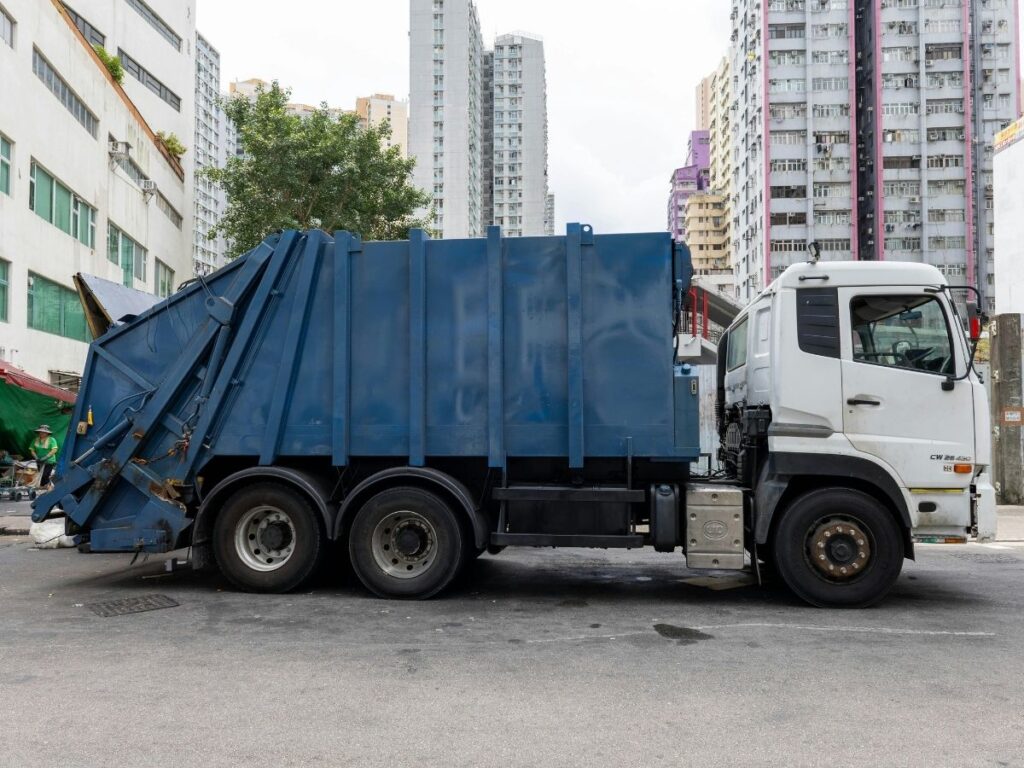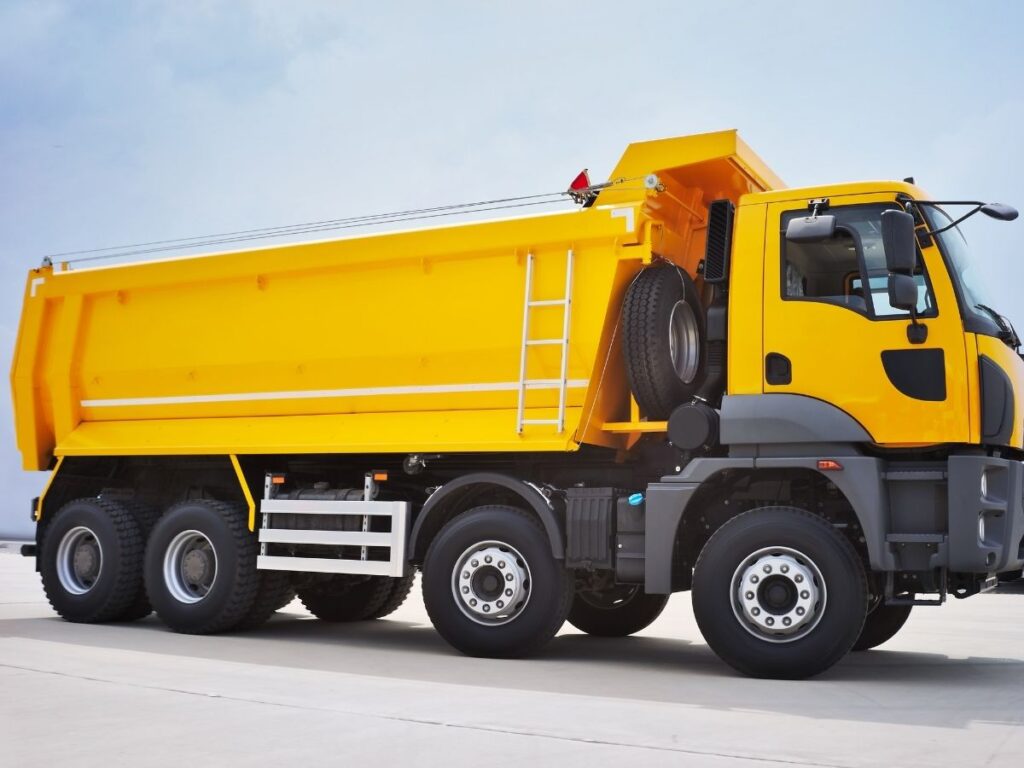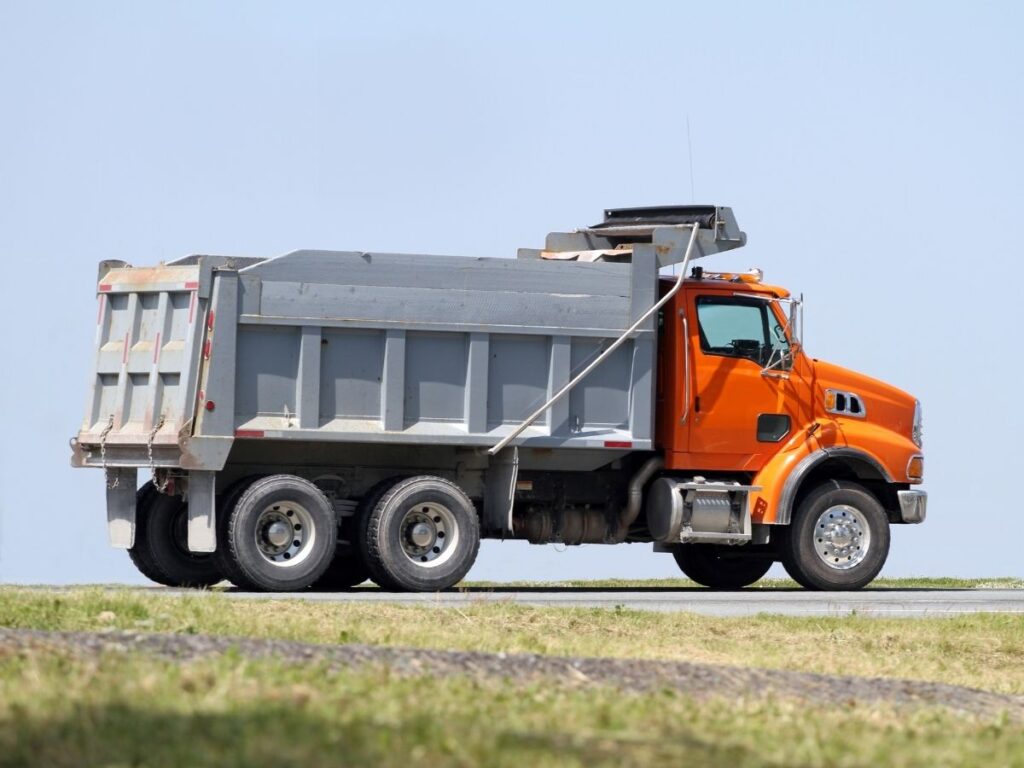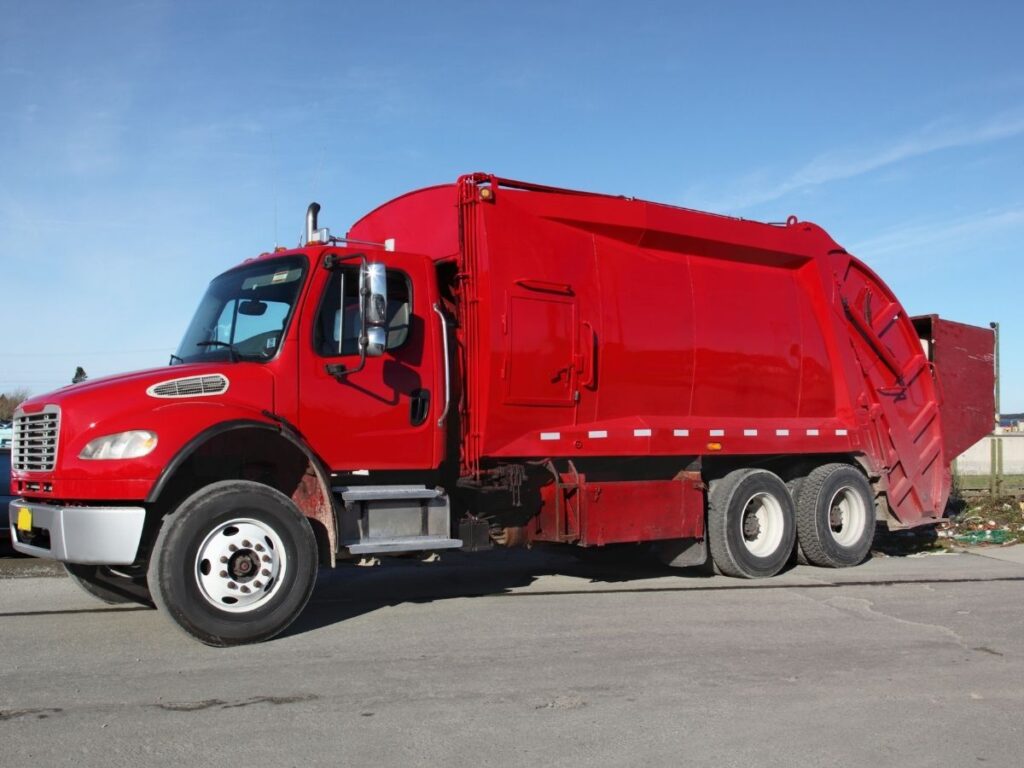I remember the day a client called me in frustration. He had just ordered what he thought was the right truck for his site cleanup job. Turned out, he bought a garbage truck when what he really needed was a dump truck.
That single mistake cost him both time and money, and he’s not alone. This confusion is more common than you’d think, especially in industries juggling multiple types of fleet.
I’ve spent years working with logistics teams, fleet managers, and procurement heads across construction, energy, and industrial sectors. This guide is built from real-world scenarios and technical comparisons that matter in day-to-day operations.
In this article, we’ll break down the key differences in a way that helps you make the right call:
- What each truck is designed to do
- How they differ in function, structure, and use
- Which one fits your specific industry needs
Let’s dive in!
1. What is a Garbage Truck?
A garbage truck isn’t just another vehicle in your fleet, it’s a purpose-built machine designed to handle one of the most critical jobs in urban and industrial operations: waste collection and disposal.
You’ll typically see these trucks operated by municipalities, sanitation contractors, and recycling service providers. But in industrial zones and commercial sites, you may also need them to manage high-volume waste streams efficiently and safely.
Key Features
Here’s what sets garbage trucks apart from other heavy-duty haulers:
- Hydraulic Compactors For Compressing Waste: These aren’t just containers, they’re equipped with crushing systems to compress and optimize space, reducing trips and maximizing efficiency.
- Enclosed Container Body: Keeps odor, leakage, and health hazards sealed off from both operators and the surrounding environment.
- Rear, Front, Or Side Loading Mechanisms: Adaptable configurations to suit your operational flow, whether you’re dealing with alleyways, tight urban routes, or open commercial yards.
- May Have Automated Arms For Bins: Designed for speed and labor savings, these systems let your operators work safely without manually handling heavy containers.
This isn’t just about waste. It’s about safety, compliance, and maintaining operational continuity without exposing your workforce to unnecessary risk.
Common Types
Choosing the right type depends on the nature of your facility, the layout of your collection points, and volume of waste output.
- Front Loaders: Often used for commercial waste bins, especially in places with scheduled pickups and fixed waste container positions.
- Rear Loaders: Common for residential or mixed-use pickup, a good option if your route involves narrow roads or multiple access points.
- Side Loaders: Frequently automated, making them ideal for curbside bins or urban sanitation programs. Speeds up collection while reducing labor demands.
- Roll-Off Trucks: Best for hauling large industrial containers or dumpsters, often used in construction cleanup, demolition, or factory floor waste handling.

2. What is a Dump Truck?
The first time I stood next to a fully loaded dump truck on a mining site, I remember thinking, this thing doesn’t just haul material; it moves the job forward. That’s exactly what dump trucks are built for: transporting loose, heavy materials quickly, safely, and efficiently.
You’ll find them everywhere heavy work gets done, from construction zones and quarries to farms, processing plants, and industrial operations. If your business needs to move bulk materials like gravel, sand, soil, or demolition debris, a dump truck is your go-to asset.
These trucks aren’t just helpful, they’re essential to keeping your operation on schedule.
Key Features
Here’s what makes dump trucks a powerhouse on tough jobs:
- Open-Box Bed (Usually Steel) Mounted On Hydraulic Lifts: Built tough to handle impact, abrasion, and heavy payloads without breaking down under pressure.
- Lifting Mechanism To Dump Material Out Of The Back: Hydraulics raise the bed to unload quickly—ideal for fast-turnaround projects where timing matters.
- Large Payload Capacity: Designed to move more in fewer trips, reducing labor hours, fuel costs, and delays.
- Durable Chassis And Suspension Systems: Engineered to endure rugged terrain and high-impact loads without compromising performance.
- Off-Road And On-Road Versatility: Whether you’re running rural hauls or navigating tight work zones, dump trucks are available in models built to handle both.
Common Types of Dump Trucks
Depending on your terrain, material, and haul distance, you’ll want to match the right type of dump truck to your specific job:
- Standard Dump Trucks: Common on job sites, featuring a short wheelbase for tighter maneuvering and rear-tilt unloading.
- Articulated Dump Trucks: Built for off-road conditions, ideal for uneven ground, deep pits, and large-scale earthmoving.
- Transfer Dump Trucks: Designed to carry additional trailers for maximized payload without compromising maneuverability.
- Side Dump Trucks: Unload from the side rather than the rear, reducing rollover risk and allowing quicker material spread on flat terrain.

3. Body Design & Loading Mechanism
One of the biggest eye-openers I had early in my fleet consulting days was how often companies overlook truck body design, until it causes a workflow problem. I once worked with a facility that had a garbage truck on-site, trying to haul construction debris. It wasn’t just inefficient, it was a mess, literally and operationally.
The way a truck is built and how it loads or unloads material has a direct impact on your workflow, labor efficiency, safety, and even maintenance needs.
Garbage Trucks
- Enclosed Body To Contain And Compact Waste: These trucks are designed to keep everything sealed. The enclosed body not only helps with odor control and hygiene but also supports hydraulic compaction systems that compress waste to fit more in a single load.
- Loading Mechanisms With Hydraulic Arms Or Loaders: Depending on the model, garbage trucks can use rear, side, or front loaders. Some are automated, which means your team doesn’t have to manually lift or handle bins, huge for safety and speed in commercial zones.
- Compactor System Located Inside The Body: Waste is pushed inward using metal blades or paddles, squeezing the contents into dense blocks. That reduces how often your trucks need to dump and maximizes route efficiency.
- Sealed Tailgate And Drainage Control: Prevents leakage, especially from wet or organic waste, a key factor for food industries or urban sanitation contracts.
Dump Trucks
- Open-Box Bed Constructed From Heavy-Duty Steel Or Aluminum: These trucks are exposed by design—because they’re made to carry bulk material like rocks, sand, and demolition waste. The open bed is easier to load with excavators or front-end loaders.
- Hydraulic Tilt Mechanism (Rear Or Side Dumping): With the push of a button, the entire bed lifts to unload material. I’ve watched this in action at a quarry, a driver dumped 20 tons of gravel in under 30 seconds. That kind of speed matters when your profit’s in the timeline.
- Reinforced Side Walls And Tailgates: Built to handle aggressive material and high impact without warping or cracking, ideal for rugged work environments.
- Accessibility From Loading Equipment: The bed height and open design make it easy for backhoes, loaders, and conveyor systems to deposit material directly into the truck without manual handling.

4. Operational Environment
I’ll never forget walking a job site with a logistics supervisor who was trying to figure out why their waste pickups were always behind schedule. The issue wasn’t the driver or the route, it was the truck.
They were using a rear-loader garbage truck in a narrow, off-road construction area where a dump truck would’ve made the job twice as fast and ten times safer.
Where a truck operates plays just as much of a role as what it does. If you’re not matching the truck to the environment, you’re setting your team up for frustration, downtime, and added costs.
Structured, Urban Routes
Garbage trucks thrive in areas where waste is consistently collected, and where space is limited but controlled, think city streets, business parks, and industrial facilities.
- Ideal for tight spaces and planned routes
- Great for curbside pickup, alleyways, and repetitive loops
- Often used in municipal, commercial, or manufacturing zones
- Not suited for uneven terrain, soft ground, or off-road conditions
If your operation involves multiple stops, compact waste bins, or strict hygiene requirements, a garbage truck makes sense. But try sending one onto a muddy construction site or loose gravel access road? You’ll have issues right away.
Tough Terrain and Open Work Zones
Dump trucks are built to handle harsh, unpredictable environments, and that’s exactly where they shine.
- Perfect for construction, mining, and agricultural sites
- Can navigate rough, uneven, and off-road terrain with ease
- Load and unload quickly in open, high-traffic zones
- Can be used in extreme weather conditions without performance loss
I’ve watched dump trucks go up quarry slopes that would leave a smaller vehicle stuck halfway. These trucks are meant to move material where roads don’t exist and schedules can’t afford to wait.
5. Hydraulic and Mechanism Differences
I once worked with a mid-sized construction firm that brought in a used garbage truck to manage debris on a temporary site.
On paper, it looked like it could handle the job. But once we fired up the hydraulic compactor and tried loading broken concrete into the back, the system jammed and shut down.
That was the moment the site manager realized: not all hydraulics are built for the same kind of work.
Both garbage trucks and dump trucks rely heavily on hydraulic systems, but how they function and what they’re built to do is very different.
Garbage Trucks
- Hydraulic Arms and Loaders: Used to lift bins from the front, side, or rear, either manually operated or fully automated. These arms are built for precision and timing, not raw power.
- Internal Compactor System: Once waste is loaded, hydraulic rams compress the material inside the sealed container. It’s all about maximizing space, not force-loading heavy debris.
- Cycle-Based Operation: Garbage truck hydraulics work in repeated cycles: lift, compact, move on. They’re optimized for stop-and-go collection across fixed routes.
- Maintenance Sensitivity: Because the hydraulic system is often more complex (especially in automated models), these trucks require tighter service schedules to avoid breakdowns.
Dump Trucks
- Hydraulic Lift System: The star of a dump truck is its tilting bed, raised by a heavy-duty hydraulic ram. This system lifts massive payloads in one motion, all weight, no compaction.
- Simple, High-Force Design: Unlike garbage trucks, dump truck hydraulics are more rugged and straightforward, making them easier to maintain and repair on-site.
- Rear or Side Dumping: Depending on the truck type, the system either lifts the bed upward or tilts it sideways, critical for fast unloading in different site layouts.
- Fewer Moving Parts: Fewer linkages and arms mean less to go wrong in rough or remote environments—especially important on mining or off-road projects.
6. Customization and Attachments
A few years back, I was helping spec a fleet for a regional waste contractor. They were scaling fast and needed trucks that could flex with different contract requirements, urban routes 1 day, construction site cleanup the next.
The solution wasn’t just in the trucks themselves, but in how we outfitted them. That project taught me a key lesson: the right attachments can turn a standard truck into a job-specific machine.
Customization isn’t just a bonus, it’s often what makes or breaks efficiency across job types, terrain, and material volume.
Garbage Trucks: Built for Route Efficiency and Safety
Garbage trucks are designed to adapt to different collection needs, especially for businesses managing multiple property types or municipalities.
- Automated Side Loaders: Great for urban environments where curbside pickup is the norm. Reduces labor requirements and speeds up collection times.
- Cart Tippers and Bin Lifters: Ideal for commercial or industrial facilities where bins get too heavy to lift manually. Cuts down on injury risk and increases productivity.
- Camera and Route Management Systems: Fleet monitoring tools that help your team optimize stops, reduce fuel usage, and increase accountability.
- Odor-Control and Leak Management Systems: Useful for food industries, retail chains, or any operation dealing with organic waste.
- Rear Loader Conversion Kits: If your current routes shift or expand, this can extend the usability of your existing fleet without replacing entire units.
Dump Trucks: Rugged Add-Ons for Rugged Work
With dump trucks, customization is all about performance, protection, and versatility in harsh conditions.
- Tailgate Options (High-Lift, Barn Door, Coal Chute): Choose based on material type, gravel, soil, or fine materials like asphalt or grain, each unload differently.
- Liners (Steel or Poly): Prevents material from sticking during unloads, especially helpful in cold, wet conditions or with clay-heavy soil.
- Tarping Systems: Keeps material contained during transit. Required by law in many areas and reduces cleanup costs on-site.
- Auxiliary Hydraulics: Enables attachment of plows, spreaders, or additional lifting mechanisms for specialized tasks.
- Off-Road Suspension Packages: Adds shock protection and stability for sites with steep grades, pits, or loose terrain.

7. Cost Comparison & ROI
I once worked with a logistics manager from a regional agri-business who was weighing whether to invest in a few rear-loader garbage trucks or go with modified dump trucks for internal waste handling.
The dump trucks looked cheaper, but a year later, they were sitting idle half the time, breaking down from tasks they weren’t designed to do. His words stuck with me: “We saved money upfront, but paid for it later,in downtime.”
Cost isn’t just about the sticker price. It’s about how well the truck matches the job and how much value it brings over its lifetime.
Initial Purchase Cost
- Dump Trucks: Typically, the more cost-effective option up front. Their structure is simpler—no compactors, fewer automated parts, and easier to manufacture at scale.
- Garbage Trucks: Come with a higher base cost due to built-in compactors, hydraulic arms, and automated systems. But if you’re in the waste business or managing large facility outputs, this cost is tied to specialized function and efficiency.
I’ve seen plenty of operations fall into the trap of choosing the cheaper truck, only to realize later it can’t handle the day-to-day demands of their actual work.
Fuel Efficiency
- Dump Trucks: Usually lighter and more fuel-efficient, especially on open routes or short-cycle jobs. Less hydraulic demand means fewer fuel-draining functions.
- Garbage Trucks: Heavier, more complex systems. Hydraulic compactors and frequent stop-start operations tend to drive higher fuel consumption, particularly on tight, urban routes.
That said, if your garbage truck is compacting five loads into one, fuel use may be higher, but trip count is lower. It’s all about the context.
Operational ROI
This is where the conversation gets real.
- If you match the right truck to the right job, your ROI goes way beyond just fuel or purchase price.
- Dump Trucks offer long-term value in raw material handling, especially in construction, mining, and agriculture.
- Garbage Trucks bring high ROI in structured waste operations where speed, hygiene, and automation reduce labor and risk.
Also consider:
- Downtime from using the wrong equipment
- Ease of repair (dump trucks are generally simpler)
- Fleet tech integration, route tracking, maintenance monitoring, driver efficiency
I always tell clients: the truck that delivers ROI isn’t the cheapest—it’s the one that performs consistently, stays on the road, and fits your operation like a glove.
8. 4 Considerations for Choosing the Right Truck for the Job
I once worked with a fleet coordinator for a growing construction and waste management company. They were running both dump trucks and garbage trucks, but no one had ever really taken the time to assign them strategically.
One site was using dump trucks for compacted warehouse waste. Another was pushing garbage trucks into terrain better suited for off-road haulers. It wasn’t just inefficient, it was bleeding money.
Bottom line: choosing the right truck isn’t just about size or horsepower. It’s about making sure your equipment aligns with your job site realities.
#1 Type of Materials
Ask yourself: What exactly are you hauling?
If you’re dealing with loose materials like gravel, dirt, sand, or demo rubble, dump trucks are the right tool. Their open beds and hydraulic tilt systems are built in bulk.
On the other hand, if you’re collecting waste, recyclables or any material that needs containment and compression, garbage trucks are designed to handle those loads cleanly and efficiently.
Also consider the cleanliness and handling requirements of your materials.
- Wet waste? Go garbage truck.
- Dry, dense aggregate?
Dump truck every time. Misjudging this can lead to damage, spillage, or constant loading issues that slow your whole operation down.
#2 Frequency of Use
Not every truck in your fleet will run daily, but some will be mission-critical, and that changes the equation. Garbage trucks are best suited for high-frequency, stop-and-go operations. If you’re collecting from facilities 5 to 6 days a week, automation will save you big on labor and fuel.
Dump trucks are great for on-demand or project-based hauling, especially when material volume fluctuates or varies by job. If a truck is going to be in near-constant use, invest in the model built to take that kind of beating, with the right automation and operator safety features to match.
#3 Terrain and Operational Environment
One of the most overlooked, but most important factors.
Garbage trucks are built for smooth, paved environments. They’re ideal for cities, business parks, warehouse districts, and fixed-route sanitation work. They don’t do well on loose soil, inclines, or ungraded terrain.
Dump trucks are workhorses in rough, off-road, and heavy-duty settings. Think about job sites, quarries, farms, and oil fields. With reinforced suspensions, traction control, and frame strength, they’ll go where a garbage truck simply can’t.
#4 Total Cost of Ownership (TCO)
Initial price tags don’t tell the whole story.
Dump trucks are cheaper up front and often simpler to maintain. But if you use them in a high-frequency, waste-collection role, their limitations will catch up, fuel usage, downtime, or safety risks may outweigh the savings.
Garbage trucks carry a higher initial cost, but their built-in compaction, automation, and route features can return serious value in the right setting. Lower labor requirements and reduced trips can translate into long-term savings.
Conclusion
Remember that client I mentioned, the one who ordered the wrong truck? After reading a guide like this and talking to a fleet expert, he made the switch. Now his sites run smoother, with the right trucks doing the right jobs.
This article broke down what garbage trucks and dump trucks do, how they work, and where each one thrives.
So what’s your next move?
Take action before inefficiency eats into your bottom line.
Let’s talk about your business needs. Contact us today! What challenge are you solving for?


